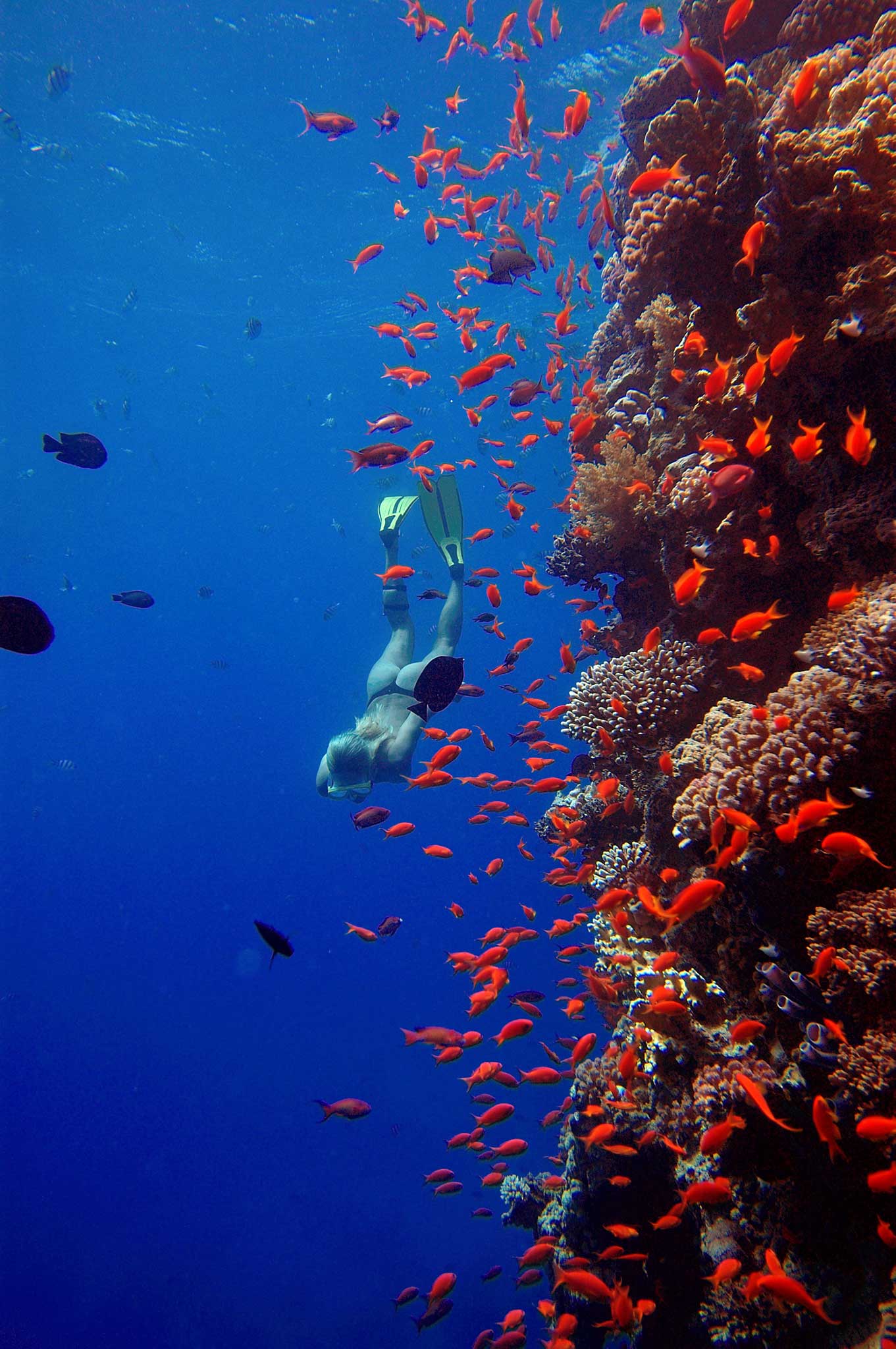Deep - Freediving, Renegade Science and What the Ocean Tells Us About Ourselves by James Nestor, book review
A rich and illuminating study of the sea, and the discoveries divers have made

This idiosyncratic and illuminating book begins with a collection of oddballs competing to see who can hold their breath for the longest time while diving deepest. Some surface covered in blood, others unconscious, one is rushed to hospital. The winner is a New Zealander who dives thirty storeys down and reappears looking bored.
Initially readers may struggle to share the excitement of James Nestor, whose life was changed by the scene, but freediving becomes Nestor's way into the engrossing strangeness and scope of the oceans. We have wanted to fraternise with fish for as long as we have wished to fly with birds. While industrialising peoples worked their way down through wooden cylinders, diving suits and submarines, archipelagic cultures preserved relationships with deep water based on a single breath. Nestor meets the last of the Ama, freediving Japanese fisherwomen who gather sea urchins. "When a man comes to the ocean he exploits it," one says, watching trawlers set sail, "When a woman puts her hands in the ocean that balance is restored."
A balance between the scientific and the spiritual is the major concern of Nestor's cast. He joins underwater cameraman Fred Buyle on a shark tagging trip to Réunion, where they eventually succeed in understanding and helping to prevent a spate of attacks by bullsharks which "eat anything with a face". Buyle seems more at ease with them than he is on land. A former champion, he believes freediving has lost its meditative dimension and become a numbers game.
The numbers are arresting. At 250ft, lungs are the size of fists and the heart beats at half speed. Gravity draws you deeper into the nitrogen narcosis zone, 300ft, where survival depends on physiological changes known as the Master Switch of Life: organs and blood vessles vent blood and water into the thoracic cavity, preventing them bursting.
By the time Nestor makes it past 50ft, after months of pain, panic and training, to a place where "all directions glow the same neon-blue and it goes on forever" you want to join him: 10,000 freedivers in the US suggest there is something special down there. Nestor embarks with a maverick inventor in a homemade submarine to explore the bioluminescent world of the Cayman Trench, two and a half kilometres deep.
Earth's largest animal communities and the greatest number of individuals live below 3,000 feet. "This is the real earth, the 71 percent silent majority. And this is how it looks – gelatinous, cross-eyed, clumsy, glowing, flickering, cloaked in perpetual darkness and compressed by more than a thousand pounds per square inch," Nestor writes.
Sharks navigate here by the Earth's magnetic pulse. They can detect the electric field generated by neurons in a swimmer's body with a sense which is five million times more acute than any of ours. While Nestor confesses that knowing this does not make him less afraid of them, his renegade scientists and activists, freedivers all, treat communion with the sea as a first step to communication with its inhabitants.
He joins amateur scientist Fabrice Schnöller, whose tools include a hyrdrophone, broomstick and pasta strainer, and who has gathered an unrivalled archive of sperm whale and dolphin communications. By their clicking echolocation dolphins can detect objects six miles away. They "see" into two feet of sand and straight through human bodies.
An adult sperm whale's clicks can kill: they are the loudest animals on earth. The pasta strainer picks up what may be a sperm whale's "gunshot" click, used to stun prey at distance, a sound only recorded twice before. Nestor is so engaged and Schnöller so engaging that you cheer for them: Deep is a passionate celebration of the possible and the unproven. The huge brains and complex clicks-within-clicks of whales and dolphins lead Schnöller to believe that dolphins exchange three dimensional images. Having sonically mapped an object, Schnöller speculates, they may then transmit that pattern to another individual.
This seems plausible as Nestor pushes into unfamiliar waters. In Los Angeles he meets a blind man, Brian Bushway, who navigates the city with sighted confidence by clicking. Nestor tries it too, as he continues to work on his own powers of breath-holding in order to freedive with sperm whales. The whales' clicks "sound like jackhammers on a pavement," as they close in, scanning Nestor inside and out as he strives to think good thoughts.
"The calf floats just in front of its mother and stares with an unblinking eye. Its mouth is turned up, like it's smiling. The mother wears the same expression; all sperm whales do," Nestor writes. "I felt a sudden recognition, an instant and ineffable sense of knowing that I was in the presence of something extraordinarily powerful and intelligent. This is not a scientific observation of course, but an emotional one."
Nestor's story is satisfying on both levels, and teaches that we live on the shore of an invigoratingly alien world. On returning from bathypelagic depths in the homemade submarine Nestor reflects, "The azure sphere we see from space is only a veneer. Our planet isn't really blue, it's not filled with leaves of grass, clouds, colour and light. It's black."
Deep demonstrates that a rich, life-filled, mysterious realm of vast possibility is contained in that blackness. It will certainly enrich the thinking of anyone planning to spend time at the beach.
Horatio Clare's latest book is 'Down to the Sea in Ships'
Subscribe to Independent Premium to bookmark this article
Want to bookmark your favourite articles and stories to read or reference later? Start your Independent Premium subscription today.

Join our commenting forum
Join thought-provoking conversations, follow other Independent readers and see their replies